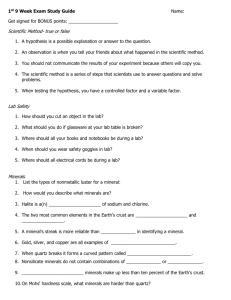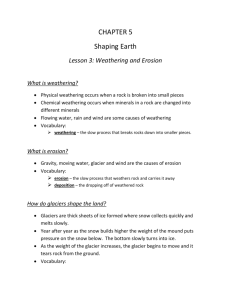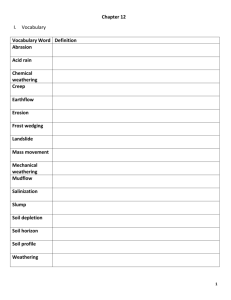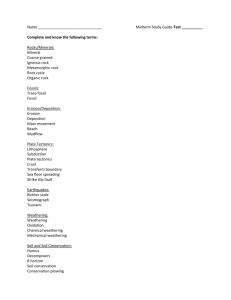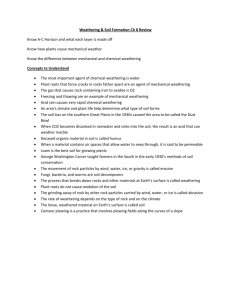Ch. 10-12 Study Guide: Weathering, Erosion, and DepositionName
advertisement
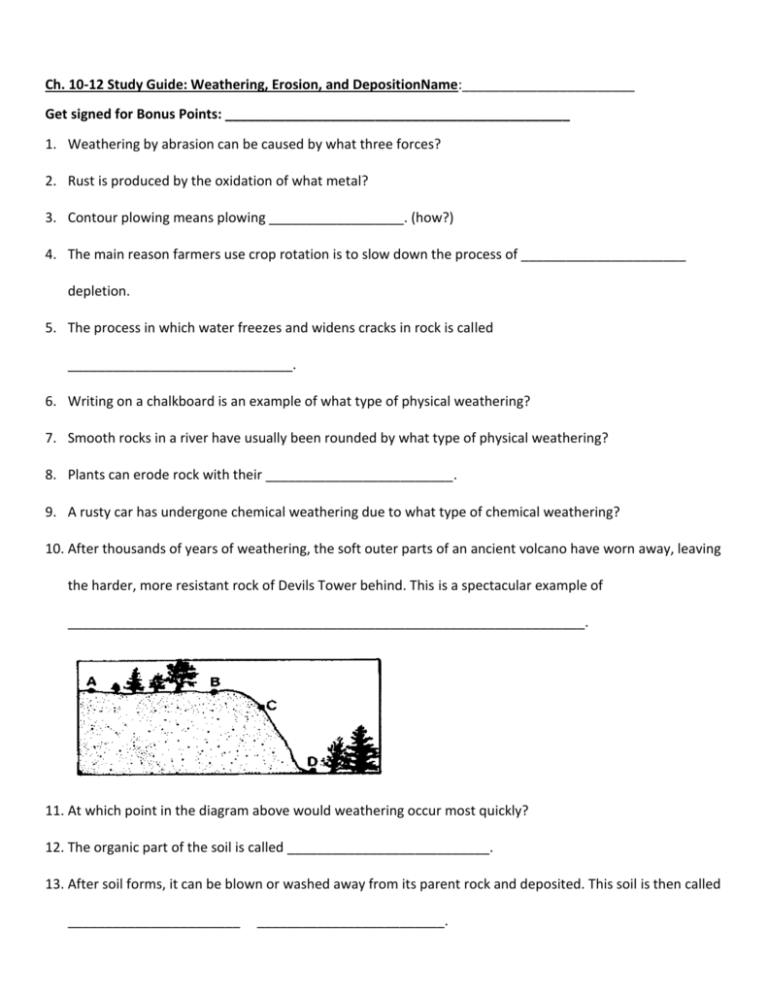
Ch. 10-12 Study Guide: Weathering, Erosion, and DepositionName:_______________________ Get signed for Bonus Points: ______________________________________________ 1. Weathering by abrasion can be caused by what three forces? 2. Rust is produced by the oxidation of what metal? 3. Contour plowing means plowing __________________. (how?) 4. The main reason farmers use crop rotation is to slow down the process of ______________________ depletion. 5. The process in which water freezes and widens cracks in rock is called ______________________________. 6. Writing on a chalkboard is an example of what type of physical weathering? 7. Smooth rocks in a river have usually been rounded by what type of physical weathering? 8. Plants can erode rock with their _________________________. 9. A rusty car has undergone chemical weathering due to what type of chemical weathering? 10. After thousands of years of weathering, the soft outer parts of an ancient volcano have worn away, leaving the harder, more resistant rock of Devils Tower behind. This is a spectacular example of _____________________________________________________________________. 11. At which point in the diagram above would weathering occur most quickly? 12. The organic part of the soil is called ___________________________. 13. After soil forms, it can be blown or washed away from its parent rock and deposited. This soil is then called _______________________ _________________________. 14. Describe what can be found in the B Horizon of a soil profile. 15. What would most likely occur if soil were to lose its nutrients? 16. What benefits does healthy soil provide? 17. What helps determine what type of soil forms? 18. A narrow strip of sand that is formed by wave deposition and is connected to the shore is called a ________________. 19. What is the term for a mass movement of volcanic origin? 20. What is a type of slow mass movement? 21. What could produce many large ocean waves? 22. What is the most common beach material? 23. A finger-shaped projection that occurs when cliffs formed of hard rock erode more slowly than surrounding rock is called a ______________________________________________. 24. The lifting and removal of fine sediment by wind is called _________________________________. 25. List the different process of wind erosion. 26. What erosion process tends to leave behind features called desert pavement? 27. In which situation would you most likely find abrasion occurring? a. a thunderstorm on the ocean. c. a sand storm in the desert b. a shower in a tropical rainforest d. a sunny day in a valley 28. What landforms created by glacial erosion are also called glacial troughs? 29. Many of these glacial erosion landforms form waterfalls after the ice is gone. 30. When eroded rock material is dropped at the front of glaciers, they form _____________________ moraines. 31. All slopes undergo a very slow mass movement, called ______________________.
